Fix Your Flying Geese
Posted by Patty Murphy on Jan 9th 2018
Do you have piecing problems? Are you Flying Geese too small or distorted? Patty Murphy comes to the rescue with this diagnosis from her book, Piecing Makeover.
PROBLEM
My Flying Geese blocks are distorted and will be too small when I trim them.
What you don’t want:
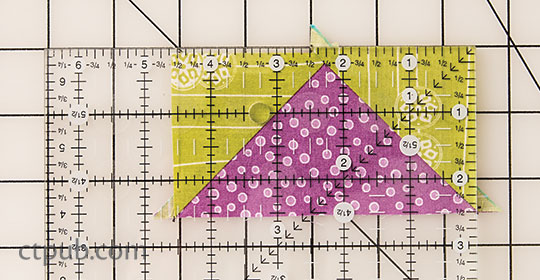
This block is too small, and the edges are wavy.
How your block should look:
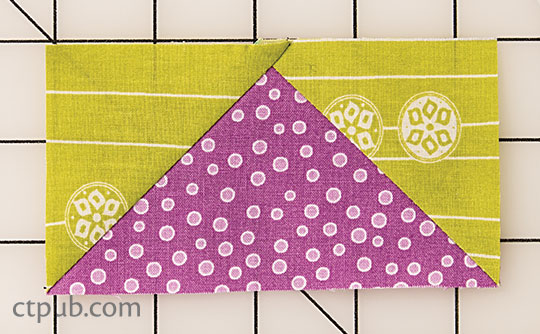
Front of a perfectly sewn block.
DIAGNOSIS
Bias is the likely culprit of wonky Flying Geese, since they involve multiple bias seams. The slightest amount of stretch while sewing can cause distorted blocks.
SOLUTION
When Flying Geese are sewn together as three separate triangles, both inside seams are sewn along the bias, which can stretch easily during sewing. I like to create my Flying Geese from squares. I make them oversized and then trim them down to produce perfect Flying Geese.
Flying Geese are made of a large center triangle with two smaller outer triangles. The triangle in the center is one-quarter of a larger square, and the smaller triangles on the outside are each one-half of a square. I add 1 ̋ to the finished size of a half-square triangle and 1 1/2 ̋ to the finished size of a quarter-square triangle. With Flying Geese, you are making half- and quarter-square triangle units, essentially—they are just modified so smaller half-square triangles are sewn onto larger quarter-square pieces.
For this example, I am making 2 ̋ × 4 ̋ finished Flying Geese. Using the quarter-square triangle math for the larger triangle, you add 1 1/2 ̋ to the 4 ̋ finished size to start with a 5 1/2 ̋ square. Using the half-square triangle math for the two smaller squares, you add 1 ̋ to the 2 ̋ finished size to start with 3 ̋ small squares.
This method makes four Flying Geese, two at a time.
1. Cut 1 square 5 1/2 ̋ (this is the “goose”) and 4 squares 3 ̋ for the smaller triangles (the “sky”) on the sides.
2. Place 2 small squares, right sides together, on opposite corners of the larger square. The squares will overlap a bit in the center. Draw a diagonal line from corner to corner through the small squares. Secure the squares with pins.
3. Sew 1/4 ̋ from each side of the diagonal line, making sure you don’t sew over the pins.
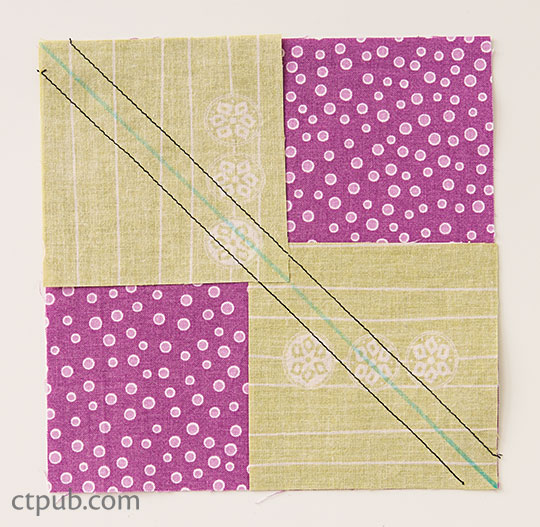
4. Set the seam, and then cut the pieces apart. Press the smaller triangles away from the larger triangle, forming 2 heart-shaped pieces.
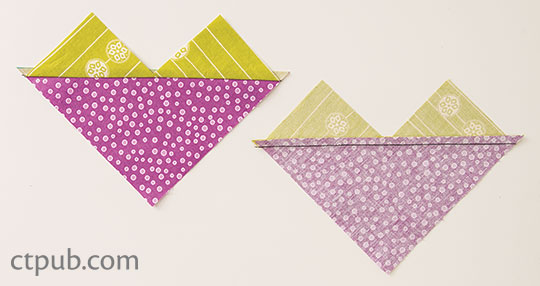
5. Place a small square on the corner of each larger triangle, right sides together. Draw a diagonal line across the square. Secure each square with a pin.
6. Sew 1/4 ̋ from each side of the diagonal line.
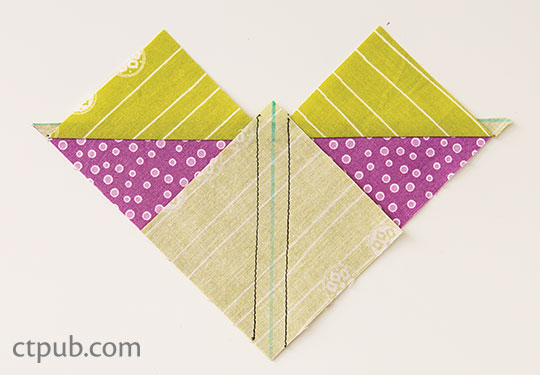
7. Set the seam, and then cut the pieces apart along the diagonal line. Press toward the small triangles.
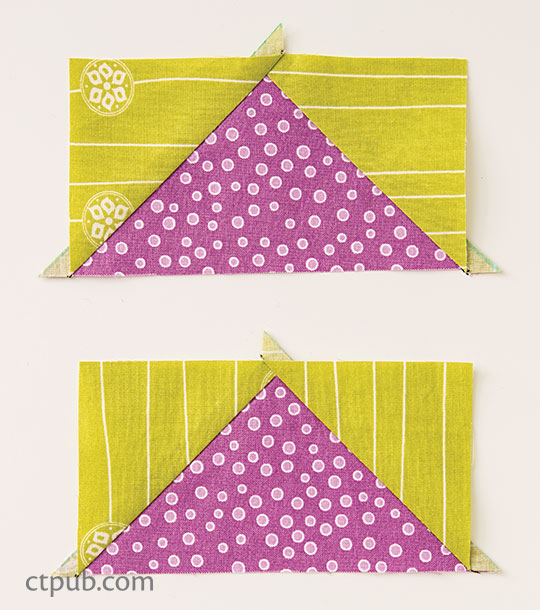
8. To trim the block, find the center point of the height of the unfinished block and line up that measurement with the 45° angle on the ruler. This particular block is 2 1/2 ̋ × 4 1/2 ̋ unfinished, so the center point is 2 1/4 ̋. Trim across the top and right-hand sides.
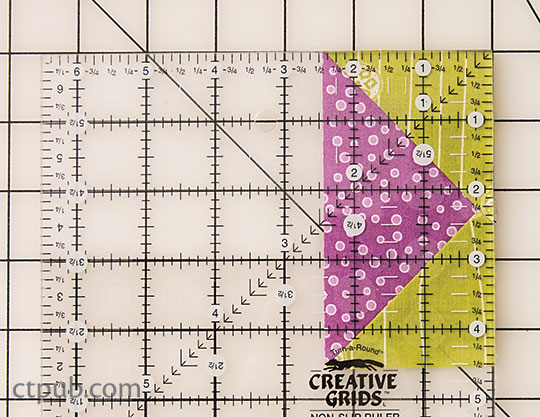
9. Rotate the block to trim the remaining sides. You won’t be able to use the 45° angle, so line up the point at the 1/4 ̋ mark on your ruler, with the trimmed edges aligned at the 2 1/2 ̋ and 4 1/2 ̋ ruler lines, to get a perfect Flying Geese block. Trim the block to 2 1/2 ̋ × 4 1/2 ̋.
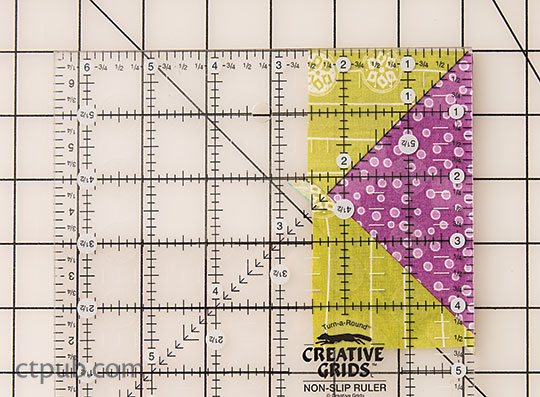
10. Repeat Steps 5–9 to create 2 more Flying Geese from the second heart shape.
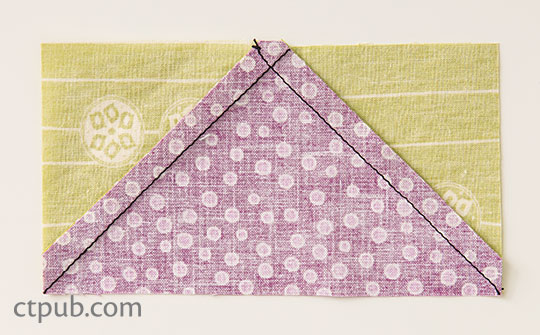
Note: From time to time when you make Flying Geese blocks, your block measurements may be off and you will have to make small adjustments as you trim. Instead of cutting off a point, shift your ruler up or down to ensure perfect points. Your block will be slightly larger or smaller, and you can ease in the seam when you sew pieces together.
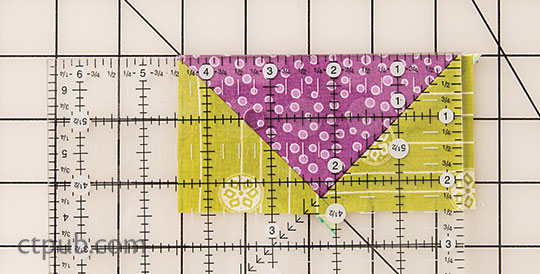
Move the ruler over slightly so you won’t cut off the point.







